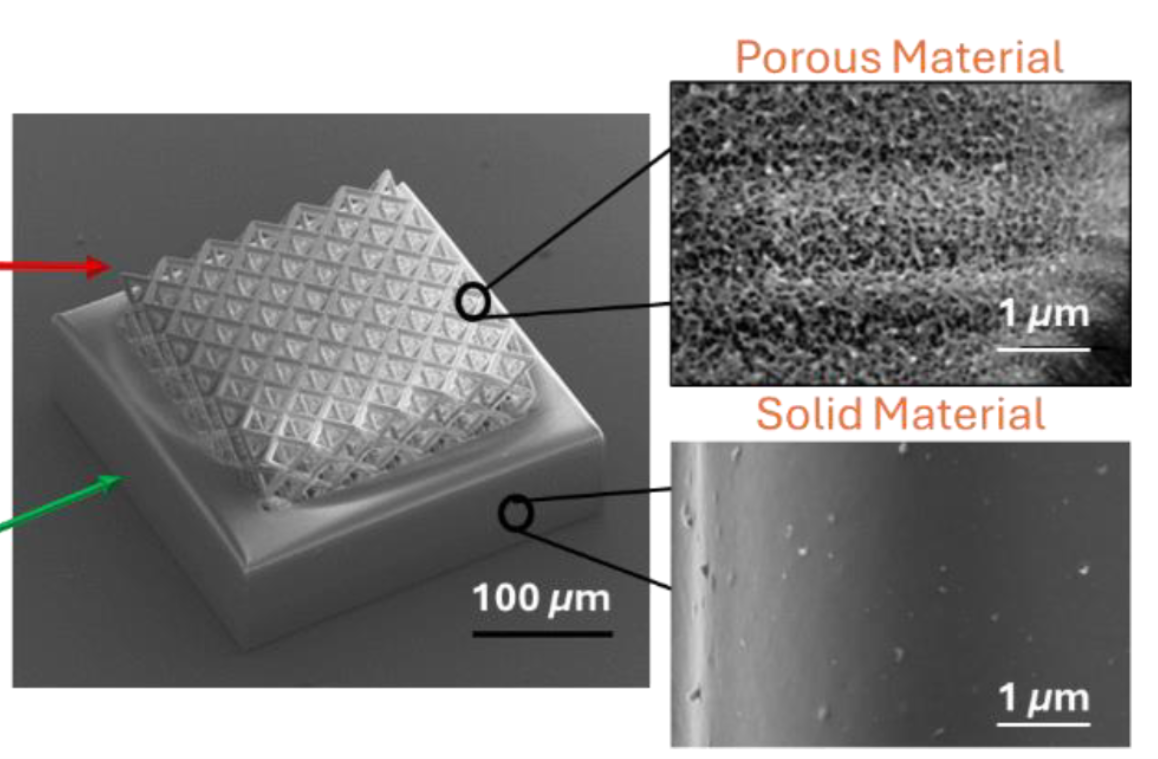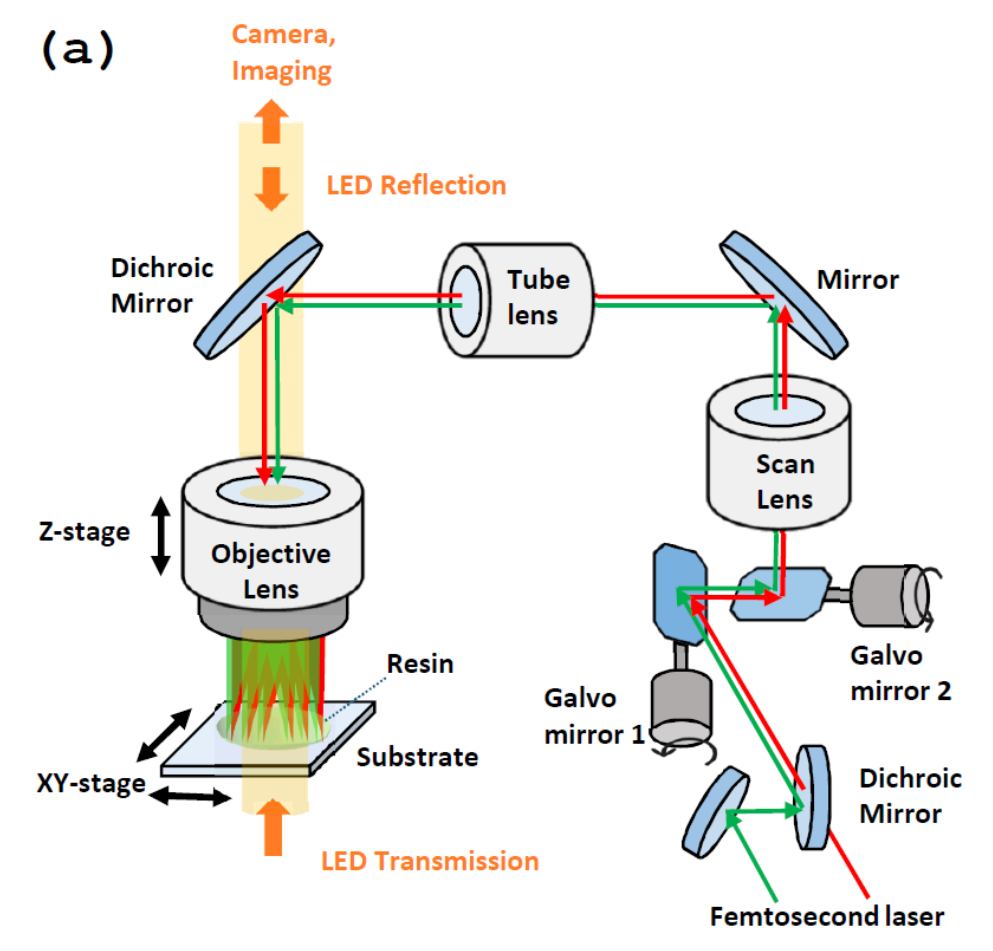Two photon polymerization (2PP) is a direct laser writing 3D printing method capable of printing submicron features with high accuracy. It uses a high numerical aperture objective to focus femtosecond lasers pulses into a diffraction-limited spot, where two-photon polymerization is activated inside a spatially confined voxel. High resolution 3D printing is achieved by scanning this voxel in space. Typically, 2PP relies on free radical polymerization triggered by photoinitiation. However, the ability to use multiple wavelength laser pulses to achieve orthogonal multi material chemistry and enhance resolution via advanced beam shaping has yet to be achieved.
LLNL inventors have developed a new multi-wavelength laser scanning system for use in two-photon printing. By integrating multiple laser beams with various choices of wavelengths, the invention provides a new pathway to fabricating a multi-material 3D structure in a single vat process while achieving increased printing resolution beyond diffraction limit. The technology uses multiple femtosecond laser beams with different wavelengths coaxially aligned through a dichromic mirror to produce spatially overlapped voxels at the image plane of the high refractive index objective lens. A substrate moves in three-axis relative to the voxels by an integrated three-axis motorized linear stage enabling augmented large scale 3D printing by either stitching or simultaneous motion control of a galvo mirror scanner and linear stages. The invented dual wavelength 2PP printing system can provide multi-material printing by two distinct wavelengths that can independently control disparate photo chemistries.
Image captions: SEM images of printed 3D structure using dual wavelength 2PP system (left) and multi-wavelength, 2PP Optical system schematic diagram (right)
- Multi-wavelength laser scanning systems allows for multi-material printing by two distinct wavelengths that can independently control disparate photo chemistries.
- The multi wavelength scanning system can enhance the resolution of a printed structure by advanced beam shaping that controls the size, shape, and relative locations of voxels at different wavelengths.
- A new printing configuration combined with a long working distance objective lens allows the printing of tall structures close to the working distance of the objective lens enabling cm scale structures to be printed.
This LLNL invention can enable the fabrication of multi material 3D structures with small feature sizes and large sample dimensions, which can be used, for example, for NIF capsule printing, battery, fuel cell, or electrolyzer electrodes, photonic or phononic crystals, mechanical metamaterials, microelectromechanical systems (MEMS), integrated circuit chips, quantum information processors, and microfluidic devices.
Current stage of technology development: TRL ☐ 0-2 ☒ 3-5 ☐ 5-9
LLNL has filed for patent protection on this invention.



